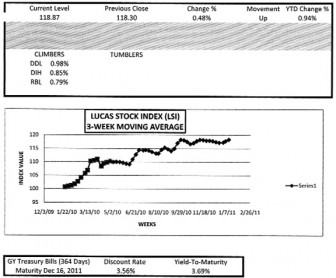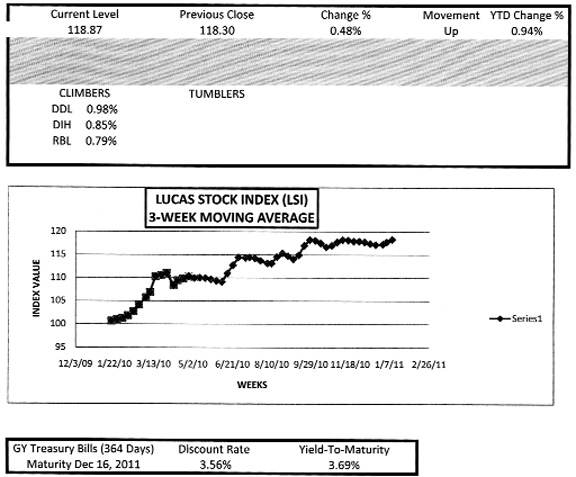Resource-Poor Households
Just over one week ago, the administration launched a G$220M credit program for the benefit of small farmers in Guyana. The money, it was reported, came primarily from the International Fund for Agricultural Development (IFAD) and is to be used to strengthen the agricultural programme of the country with special emphasis on certain regions. As correctly noted, the credit programme is part of the Rural Enterprise and Agricultural Development Project which IFAD has agreed to support. The Ministry of Agriculture (MOA) has the responsibility of implementing the project on behalf of the Government of Guyana. In agreeing to the project, IFAD expects that the Agriculture Sector Development Unit of the MOA will play the lead role in the management of the enterprise, on behalf of the Ministry. Given the focus and scope of the project, the New Guyana Marketing Corporation (NGMC) would be playing an important role as well. This project hopes to achieve something that the administration has struggled with since taking the reins of the government; improving the social and economic conditions of resource-poor households in Guyana.

LUCAS STOCK INDEX
The Lucas Stock Index (LSI) ended with a slight gain of 0.48 percent over trades from the previous period to end at 118.87. Trading this week involved the stocks of Banks DIH (DIH), Caribbean Container Inc (CCI), Demerara Distillers Limited (DDL) and Republic Bank Limited (RBL). DIH, DDL and RBL recorded slight gains while CCI showed no change in its stock price.
Out of Proportion
It is not clear why the administration seems to be blowing this initiative out of proportion. At the launch of the project, unsuspecting Guyanese would believe from the remarks that were made that this initiative would rescue Guyana from its food insecurity and the Caribbean region from the monumental food import bill that it currently has when, in fact, this project has the very modest but important goal of improving the living conditions of very poor households and vulnerable groups in Guyana. IFAD, the principal funding partner in this project, is asking that the money be spent to alter the lives of the people in 5,200 households. According to the Bureau of Statistics, each household in Guyana has about four persons suggesting that the funds received from IFAD should help at least 20,800 Guyanese. This number represents about three percent of the Guyanese population and it is that group of individuals who are being given a chance to work their way out of poverty. The monetary value that is placed on this goal requires that each targeted beneficiary be earning at least G$73,000 per year or US$1 per day by the time the project comes to an end in 2014. This paltry sum is a stark contrast to billion dollar import bills.
Rescue Mission
The initiative could really be viewed as a rescue mission being made possible by the funds from IFAD that should not have been necessary if the administration had a clear vision for developing agriculture in Guyana. But Guyanese might not realize this by the fanfare with which this program was announced last week. Short steps towards improving the lives of disadvantaged populations were converted into giant leaps with expected grandiose outcomes of food security and food sovereignty to distract from the failure of agricultural production in Guyana. The notion that G$220 million will change the fortunes of Guyana and the Caribbean in a big way is a myth. A policy to feed, clothe and house Guyana existed since the 1970s, so the question that the administration should have been asking was how to get it done. Instead of taking advantage of that policy and applying the method that it considered most suitable for the country, the administration abandoned the policy when it took office and allowed agricultural production, for the most part, to take its own course.
Cooperatives.
As a consequence, food production in Guyana dropped precipitously; as a result, the manufacturing and the agricultural sectors were left hamstrung. Even with the truth about financing for agriculture in front of it for many years, the administration could not bring itself to say loudly to Guyanese that forming cooperatives was one of the best ways to raise resources for small-scale farming. Even after adopting its export-led agricultural policy, only half-hearted efforts were made to encourage and support the formation of cooperatives so that villagers could raise capital to make production viable. The end result is plenty of Guyanese struggling to get out of poverty and many others trying to avoid slipping into it.
Half a loaf
With many opportunities to fix the problems of agriculture, Guyanese must be wondering why the administration waited until the beginning of 2011 to roll out some of the money that was approved by the Executive Board of IFAD since 2007. It is not clear either why the project targets only six selected regions of 2, 3, 4, 5, 6 and 10 when poor people live in all 10 regions of the country. In this particular case, the agreement struck with IFAD requires that two important objectives be met. One is that the money must reach at least 13,000 project clients by the time the project is over. Two, it must bring benefits to 20,800 individuals. When divided by the number of project clients, each will receive an average of G$17,000 to carry on their business if all the money was available for loans.
Even though micro-financing agencies account for over 66 per cent of the loans to small businesses operating in the “other agriculture” sector, micro lending accounts for eight per cent of small business needs. In an environment of limited or no financing for small business agriculture, half a loaf is better than none at all.
Careful
If Guyanese had the time to look, they would notice that IFAD is very careful with the release of funds to the administration. While the precedent conditions of IFAD for implementing this project might be standard, they are clearly designed to protect the resources allocated to the project and to ensure that the people of Guyana, and not the administration, benefit from the money. The many special provisions that reference preconditions for the release of the money and for conducting procurement activities are examples of reservations about the administration doing things the correct way. This money is a grant from IFAD which means that it does not have to be repaid. However, it has to be well spent and IFAD has installed a multitude of “deadbolts” that makes it difficult for the administration to pry open the door to the people’s money. Yet, Guyanese should not be lulled into believing that this administration is looking out for all of them.










